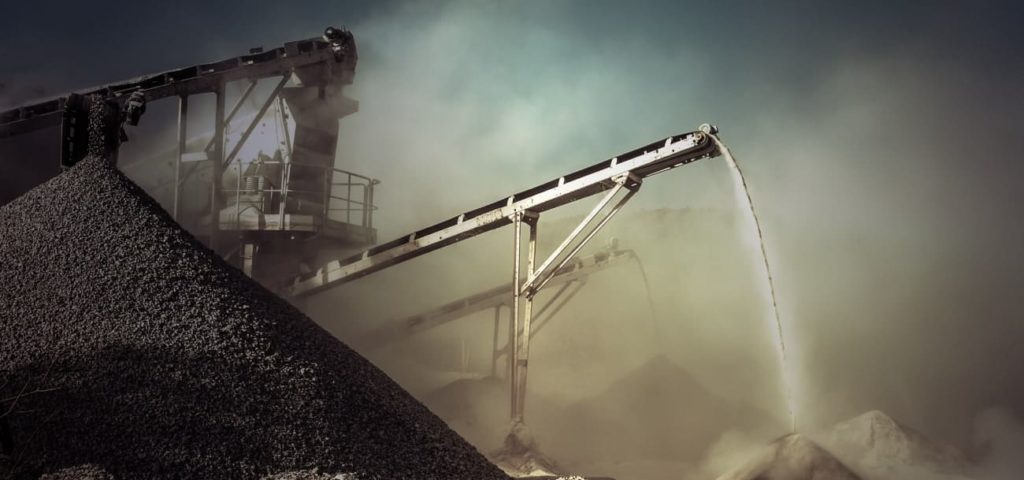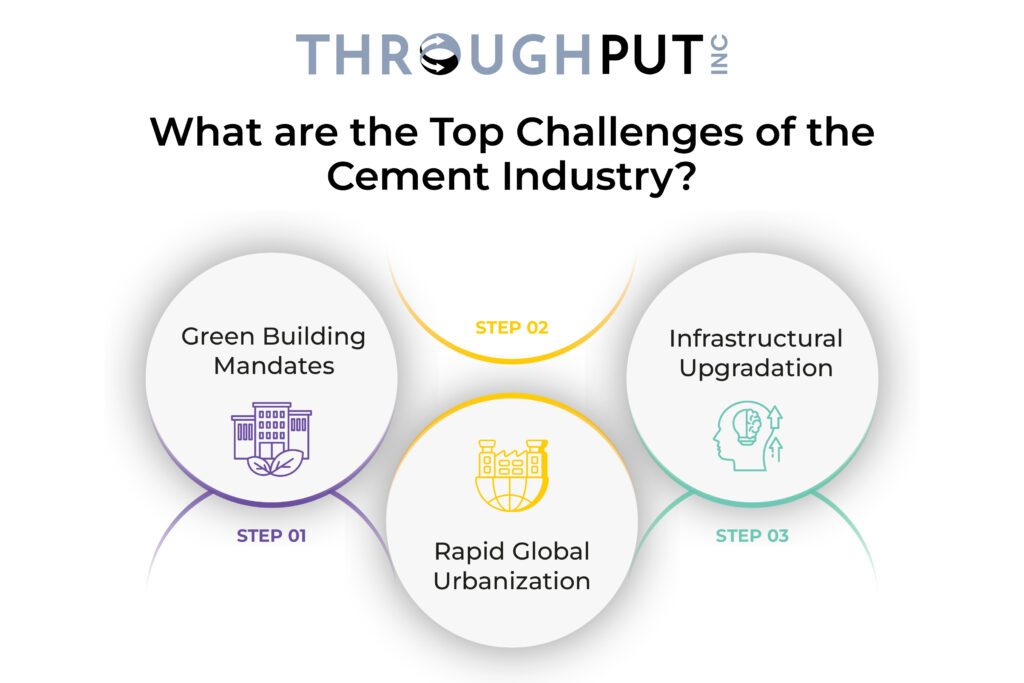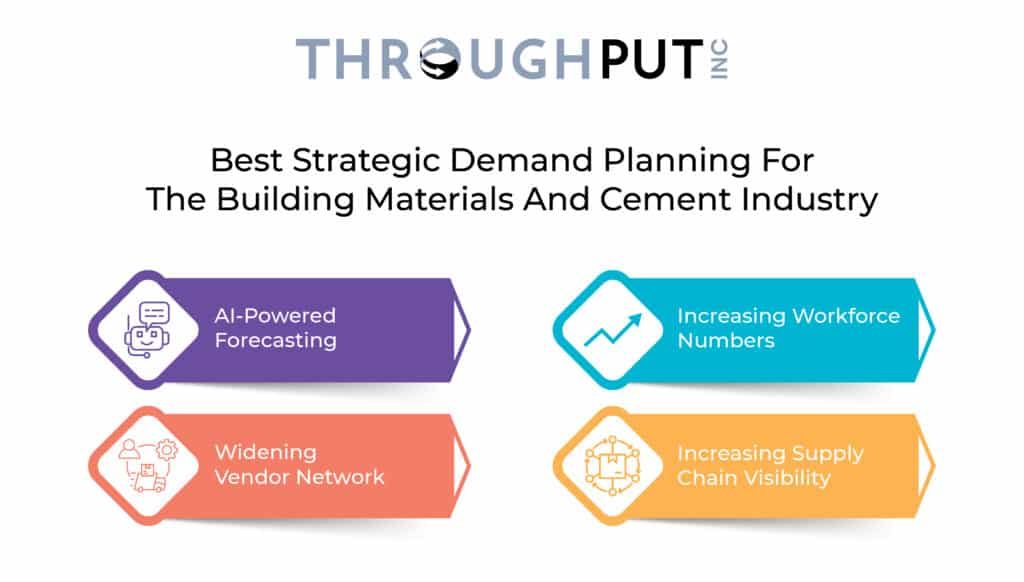AI-powered Demand Planning for Building Materials and Cement Industry: How To Balance Supply & Demand

Dating back to 5600 BC, cement has become an indispensable building material, with its consumption only second to that of water.
While the construction industry itself poses unique challenges in supply chains across the world, cement manufacturing and demand planning come with their own diverse set of differentiators like the ones mentioned below:
What are the Top Challenges of the Cement Industry?

1. Green Building Mandates and Metrics (2021–2025)
2021:
IPCC report highlights that 40% of global carbon emissions are linked to the construction industry.
Rising awareness of embodied carbon and manufacturing waste in construction processes. Initial adoption of green building certifications like LEED and BREEAM begins to scale.
2022:
Governments and organizations begin implementing stricter green building regulations.
Emphasis on reducing embodied carbon by 10–20% in new construction projects.
Increase in the adoption of recycled and sustainable materials by 15%.
2023:
Carbon accounting tools see widespread adoption, tracking lifecycle emissions in construction.
20% reduction in operational carbon emissions in green-certified buildings compared to 2021.
Growth in AI-powered energy efficiency solutions for green building infrastructure.
2024:
Introduction of net-zero energy building mandates in several regions. 30% decrease in construction waste through optimized supply chains. Surge in smart material technologies reducing embodied carbon by up to 25%.
2025:
IPCC’s latest findings show significant progress in emission reduction in the construction industry.
40% of new buildings globally are net-zero carbon compliant.
Widespread adoption of AI-driven solutions across all construction phases, enhancing sustainability.
Green building practices contribute to a 35% reduction in global construction emissions.
As environmental concerns escalate, a high percentage of cement manufacturers are choosing to evaluate their processes and proposals and optimize them for enhanced eco-consciousness.
2. Rapid Global Urbanization
It is predicted that by the year 2050, 7 billion people will live in urban areas across the world. This shift to an urbanized lifestyle comes with a lofty demand for increased housing and the urban infrastructure to support the growing urban sprawl.
3. Infrastructural Upgradation
The US Senate, in August 2021, passed a $1 trillion proposal for Infrastructural Upgradation to upgrade America’s roads, bridges, and tunnels. Since cement is a key construction material, this proposal is going to create widespread demand for cement.
Unless building material supply chains enhances agility while catering to this cement demand, it is going to create a disbalance between demand and supply.
A key enabler that has made the cement industry even more prone to demand fluctuations is the shift from infrastructure development initiatives in first-world countries to those in second-world countries. The Indian construction industry is set to achieve a Compound Annual Growth Rate (CAGR) of $738.5 billion by 2022.
Statistics around other developing economies in Southeast Asia and Latin America show similar trends on the verge of wide-scale growth.
Cementing Supply Chain Operations: Key Drivers for Optimized Cement Supply Chains
The cement industry is a core industry due to its influence on urban-level infrastructure as well as private settlements. It influences demand across sectors like housing, transport and logistics management, and even consumer goods.
Accurately anticipating this demand to enhance efficiency across the supply chain can lead to breakthroughs in construction supply chain management and the elimination of bottlenecks in manufacturing.

Strategic demand planning to future-proof building materials and cement industry for uncertainties
Strategic demand planning for the building materials and cement industry ensures stakeholders a higher degree of stability in an otherwise volatile market. A few key strategies that enable efficient demand planning include using Artificial Intelligence (AI) for testing, risk mitigation, and demand forecasting.

1. AI-Powered Forecasting
Machine learning models can make sense of a range of (seemingly) unconnected data to drive usable insights. These models then generate specific reports on key trends, demand projections, and geographies of escalated demand.
Employing AI-powered tools has become necessary to differentiate the information generating forums from legacy frameworks adopted by businesses.
2. Widening Vendor Network
As global disruptions due to geopolitical unsettlement become common, cement businesses need to develop far-reaching vendor networks. A wide network of vendors can buffer against elevated demand, create a consistent flow of material across the supply chain, and enhance deliverability.
3. Increasing Workforce Numbers
The cement industry needs an army of workers at its base operations to keep up even with everyday demand levels. However, escalated demands necessitate workforce evaluation and exaggeration.
As the world runs into global workforce shortages, cement manufacturers need to scale their workforce to remain viable.
4. Increasing Supply Chain Visibility
Increasing supply chain visibility can ensure demand deliverability in two ways-
- At the Demand Fulfilment Stage
A transparent supply chain establishes opportunities for added inventory in the cement industry early on. This transparency ensures shorter lead times and faster demand fulfillment for both B2B as well as B2C enterprises.
- At the Replenishment stage
When escalated demand calls for efficient order placement and inventory restocking, transparency in supply chains can highlight excess inventory in nearby locations. This can enable cement manufacturers to cut costs on transport and delivery and expedite building operations.
An Intelligent Demand-Planning Solution for Cement Manufacturers
Catering to global infrastructural operations, the cement industry is a high-value component of the building sector. As deliverability and efficient transportation systems gain prominence across supply chains, it becomes even more important for the cement industry to proactively factor them in.
ThroughPut’s AI Suite offers intelligent solutions to enhance visibility across the supply chain to expedite procurement and delivery for cement manufacturers.
ThroughPut’s AI-powered engines drive insights from multi-faceted data to give direction and agility to global cement chains. Real-time reports on shortages, demand escalation, and inventory data allow cement manufacturers to take important calls early in the supply stages.
Book a demo with ThroughPut’s Demand Planning and Sensing Module to achieve transparency, agility, and visibility in your building materials and cement supply chain.

